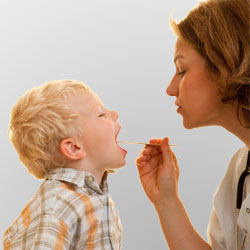Development of saliva-based exposure assays for detecting exposure to waterborne pathogens

Microbial pathogens (viruses, bacteria, parasites) in drinking and recreational water can cause illness in humans. Identifying the specific pathogens we are exposed to can be very challenging because many types of these pathogens can be found in water and many have similar health effects symptoms. To understand the risks associated with waterborne pathogens, an assessment is needed to determine if there has been human exposure or infection with specific pathogens. Traditionally, methods to measure exposure or infection have relied on serological assessments. These can be expensive and invasive approaches requiring that blood samples be collected and tested for antibodies against the pathogens in question. There is a need for analytical methods that are less invasive, cost-effective, rapid, allow for high throughput analysis, and can simultaneously measure exposure to multiple pathogens.
EPA scientists have developed a simple way to measure human infection and exposure to waterborne pathogens. Using swabs of crevicular saliva enriched for serum antibodies, which can be collected quickly and non-invasively, scientists can look for specific antibodies created by the immune system in response to infection with certain microbes. Using this method, scientists can collect, store, and measure these antibodies using a high throughput multiplex immunoassay.
This saliva-based method gives scientists the ability to accurately measure a person’s actual exposure to waterborne pathogens and to understand the relationship between the pathogen concentrations measured in water samples, illness rates, and human exposures. Further, this method enhances epidemiological studies by providing direct measurements of exposure and infection, and can show decision makers which waterborne pathogens present the greatest risk and how different water management strategies affect the health of communities.
Resources:
- Application of a Salivary Immunoassay in a Prospective Community Study of Waterborne Infections (2018)
- Asymptomatic Norovirus Infection Associated with Swimming at a Tropical Beach: A Prospective Cohort Study (2018)
- Immunoprevalence to Six Waterborne Pathogens in Beachgoers at Boqueron Beach, Puerto Rico: Application of a Microsphere-Based Salivary Antibody Multiplex Immunoassay (2017)
- Developing a Salivary Antibody Multiplex Immunoassay to Measure Human Exposure to Environmental Pathogens (2016)
- Statistical Approaches to Developing a Multiplex Immunoassay for Determining Human Exposure to Environmental Pathogens (2015)
- Application of Salivary Antibody Immunoassays for the Detection of Incident Infections with Norwalk Virus in a Group of Volunteers (2015)
